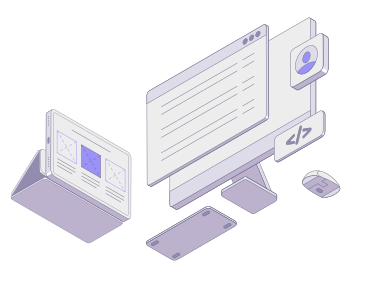




The Ultimate Guide to Web Design Redesign: When and How to Revamp Your Website
A website is often the first point of contact between your business and potential customers, serving as a digital storefront that reflects your brand’s values, products, and services. However, as your business evolves, so should your website. If you find that your current website no longer aligns with your brand’s goals, is outdated, or isn’t delivering the desired results, it might be time for a web design redesign.
A website redesign involves more than just a fresh look; it’s about improving functionality, user experience (UX), SEO, and overall performance. In this blog post, we’ll explore the key reasons for undertaking a website redesign, the benefits, and a step-by-step guide to a successful web design revamp.
Why You Should Consider a Web Design Redesign
Not sure if your website needs a redesign? Here are some common indicators that it might be time to rethink your site’s design:
1. Outdated Design and Branding
Web design trends change over time, and what was visually appealing a few years ago might now seem dated. An outdated design can make your business look less credible and turn potential customers away.
Signs Your Design is Outdated:
- Your website doesn’t reflect your current branding, including logo, colors, and messaging.
- It has an old-fashioned layout or style, like heavy use of Flash or animated graphics.
- The site is cluttered and lacks a clean, modern appearance.
2. Poor User Experience
User experience is key to keeping visitors engaged and encouraging them to take action. If your website is difficult to navigate, slow to load, or not mobile-friendly, it’s time for a redesign.
User Experience Issues to Look For:
- Slow page load times.
- Difficult navigation or broken links.
- Lack of mobile responsiveness, causing a poor experience on smartphones and tablets.
3. Low Conversion Rates
If you notice that visitors are not taking the desired actions—such as filling out forms, making purchases, or signing up for newsletters—it could indicate issues with your website’s design and functionality.
Conversion Problems That Warrant a Redesign:
- High bounce rates on landing pages.
- Ineffective call-to-action (CTA) buttons that are hard to find or poorly designed.
- Over-complicated checkout processes for e-commerce sites.
4. Outdated Technology and Security Concerns
Older websites may be built on outdated technology, leading to potential security vulnerabilities and poor performance. A redesign can address these issues by upgrading your site’s backend and implementing the latest security measures.
Technology-Related Red Flags:
- Your website is running on an old content management system (CMS) or software version.
- Plugins and themes haven’t been updated, creating potential security risks.
- The site lacks essential security features, like SSL certificates.
5. SEO Performance Issues
If your website isn’t appearing in search engine results, it might be due to outdated SEO practices, poor website structure, or slow loading times. A redesign can optimize your site for search engines, helping to attract more organic traffic.
SEO Issues That Might Need a Redesign:
- Missing or outdated meta tags.
- Lack of structured data or schema markup.
- Slow loading speeds that negatively impact rankings.
Benefits of a Web Design Redesign
A website redesign isn’t just about creating a new look; it offers numerous benefits that can improve your site’s performance, user engagement, and business success. Here are some of the key advantages:
1. Improved User Experience
A redesigned website focuses on delivering a seamless and engaging user experience. Improved navigation, mobile-friendliness, and fast load times make it easier for visitors to find what they’re looking for, increasing the likelihood of conversions.
2. Enhanced SEO and Visibility
Modern web design practices include SEO best practices, such as optimized URLs, structured data, and responsive design. A redesign ensures your website aligns with the latest search engine algorithms, improving your rankings and driving more organic traffic.
3. Stronger Branding and Messaging
A fresh design allows you to align your website with your current branding and business messaging. Consistent visuals, fonts, and color schemes across your site strengthen your brand identity and make a lasting impression on visitors.
4. Increased Conversion Rates
By enhancing usability and incorporating effective CTAs, a redesign can directly boost your website’s conversion rates. Whether you’re aiming for more sign-ups, inquiries, or sales, a redesigned site makes it easier for visitors to take action.
5. Better Security and Performance
A redesign allows you to implement the latest security features, like SSL certificates, firewalls, and regular backups, protecting your site from cyber threats. Additionally, performance improvements like optimized images, caching, and cleaner code ensure faster loading times.
How to Approach a Web Design Redesign: A Step-by-Step Guide
Undertaking a web design redesign can be a complex process. To ensure it’s successful, you need to have a strategic approach. Here’s how to go about it:
1. Evaluate Your Current Website
Before diving into a redesign, perform a thorough evaluation of your existing website. Identify its strengths and weaknesses, focusing on aspects like user experience, SEO performance, and content quality.
Tools for Evaluation:
- Use Google Analytics to identify pages with high bounce rates or low conversion rates.
- Conduct a website audit using tools like Ahrefs or SEMrush to identify SEO issues.
- Gather feedback from your audience to understand their pain points when navigating your site.
2. Set Clear Goals
Define the goals of your redesign. Do you want to improve user experience, increase conversions, update your branding, or enhance your SEO performance? Having clear objectives will guide your design choices and help measure the success of the redesign.
3. Plan the New Design
Work with a web design professional or team to develop a redesign plan. This plan should include the following elements:
- Wireframes and prototypes for the new layout.
- A content strategy that focuses on high-quality, SEO-friendly content.
- An improved navigation structure that makes it easy for users to find information.
- A mobile-first approach to ensure responsiveness across all devices.
4. Optimize for SEO
Incorporate SEO best practices into your redesign plan to ensure your website is search-engine-friendly. Focus on:
- Implementing structured data and schema markup.
- Using SEO-friendly URLs, meta tags, and headers.
- Optimizing images and improving page speed.
5. Focus on User Experience and Conversion Optimization
Your redesign should prioritize user experience, which directly impacts your website’s effectiveness. Consider:
- Adding clear call-to-action (CTA) buttons that guide users to take action.
- Simplifying forms and checkout processes to reduce friction for users.
- Incorporating testimonials, reviews, and trust signals to build credibility.
6. Implement and Test the Redesign
Once you’ve finalized the new design, it’s time to implement it. However, don’t launch your redesigned website without thorough testing. Conduct user testing, cross-browser compatibility checks, and mobile responsiveness tests to ensure everything works smoothly.
7. Monitor and Analyze Performance Post-Launch
After launching the redesigned website, continue monitoring its performance using tools like Google Analytics and Search Console. Track key metrics, such as bounce rates, conversion rates, and organic traffic, to measure the success of the redesign.
Conclusion
A web design redesign is a valuable investment for any business looking to stay competitive in the digital marketplace. Whether your current website is outdated, not aligned with your brand, or underperforming in terms of user experience and conversions, a redesign can breathe new life into your online presence.
By focusing on user experience, optimizing for SEO, and aligning your site with your business goals, a website redesign can help attract more visitors, improve engagement, and boost conversions. At Masthead Technology, we specialize in creating tailored web design redesigns that drive results. Contact us today to find out how we can help transform your website into a powerful business tool.
FAQs
1. How often should a website be redesigned?
Most experts recommend redesigning your website every 2-3 years to keep up with evolving design trends, technology, and business goals. However, if you notice performance issues or changes in your branding, it may be time for an earlier redesign.
2. How long does a website redesign take?
The time it takes to redesign a website depends on its complexity and the scope of the changes. A basic redesign may take 4-6 weeks, while a more extensive redesign with custom features can take several months.
3. Will a redesign affect my website’s SEO?
Yes, a redesign can impact your SEO positively or negatively. To avoid losing rankings, it’s important to implement SEO best practices during the redesign process, such as using 301 redirects for old URLs and optimizing new content.
4. Should I redesign my website if I only want to improve conversions?
Yes, a website redesign can be an effective way to enhance conversion rates by improving user experience, adding clear CTAs, and streamlining navigation.
5. What is the cost of a web design redesign?
The cost of a website redesign varies depending on factors like the size of your website, the complexity of the features needed, and the design requirements. It can range from a few thousand to tens of thousands of dollars.

